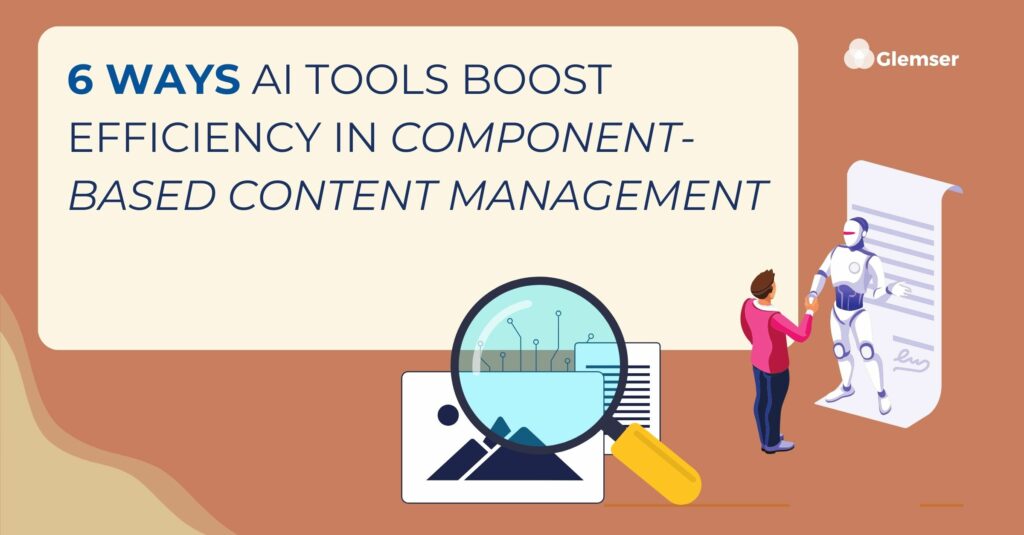
Pharmaceutical companies use traditional component content management systems (CCMS) to organize, develop, and manage regulatory documents using a predefined set of rules, templates, and guidelines.
While these tools fundamentally contain controlled ways to reuse pre-existing content and to pre-populate key elements, layering on AI tools allows for document automation (where outputs are automatically produced, built from reused components, and instantaneously populated with data) and improved productivity across pharmaceutical content authoring processes.
Below we explore the top six ways that structured content AI tools help boost efficiency in component-based content management.
1) Speeds up Content Authoring
A recent study found that combining existing component content management systems (CCMS) with innovative, industry-specific AI tools can help reduce the time it currently takes pharmaceutical companies to develop and revise product labels and other content by up to 50%.
For instance, prebuilt templates for regulatory outputs combined with the drag-and-drop functionality native to structured content AI tools reduce content format generation from hours to minutes.
Similarly, automated data mapping can reduce manual and non-value add efforts across content development and regulatory teams and elevate overall team capabilities by driving a higher level of skill and efficiency in performing work.
No more time-consuming copying, pasting, and re-creating tables, lists, and graphs. Improved productivity and process quality in turn reduces employee overtime and associated direct labor costs due to rework and delays.
2) Improves Content Re-Use
Structured Content AI tools overlay existing content management and labeling systems to harmonize agency-neutral content with meta-data, attributes, and properties to create modular controlled components and data-driven documents at the section level.
These controlled components can then be used to create a library of words and phrases that are automatically applied in the content creation and translation processes. Using a structured content approach enables teams to break down their content into reusable modular components. Instead of building new content models for every content page, teams build bite-sized component blocks that when put together can form any number of content pages.
Broadly speaking, using AI tools allows content authors to reuse more content (35% improvement) and realize up to a 35%-45% boost in productivity across pharmaceutical content authoring processes.
3) Increases Transparency & Traceability
Leveraging AI tools in conjunction with a component content management system can also allow content teams to manage, duplicate, link, and package components into individual or multiple outputs as well as to make changes to and review specific parts of a submission without having to spend multiple cycles updating and reviewing the entire document.
For example, using AI tools allows content authors to find and update content quickly and efficiently (35% improvement) and easily review and accept changes (5% improvement). Any changes made to a given component in the source document or system (i.e., RIM system) can be automatically implemented across other files containing that component if appropriate, enabling greater security, accuracy, and flexibility.
The human in the loop can review what downstream impacts the component will have and select which or all the outputs it would like to apply to.
The impact analysis and traceability features contained within these AI-powered tools allow content management teams to spot-detect any regulatory submission containing a changed component, so they know exactly which outputs need Health Authority interaction or re-submittal.
4) Improves Translations
AI tools promote efficient translation, speeding up translation times and lowering the third-party costs of meeting global requirements by 15%-25%. Pharmaceutical companies can harness the power of AI tools to transform CCDS language into sentences and sections that make sense for any given local label geography.
These tools use natural language capabilities to classify the language from CCDS, extract meaning from it to learn the content and context, predict the appropriate sentence structure depending on the desired local label geography, and then transform the data into multiple sentence options that are appropriate for the local label output.
This enables content authors to select the sentence that makes the most sense for the local label output, reducing cycle times and workload while allowing for an efficient and collaborative review process that maintains author control to ensure data integrity.
5) Ensures Sustained Compliance
AI tools can help pharmaceutical companies shave millions of dollars off the cost of upcoming regulatory compliance maintenance (IDMP, ePI) by ensuring sustained compliance.
Through crawling existing data repositories and RIM systems using natural language processing, AI tools can continuously find, index, and sustain compliance while generating the next best action.
Full audit trail capabilities contained within these tools also allow for the tracking and efficient incorporation of health authority feedback. Industry-tailored and AI-enabled component-based content management tools can mitigate the risk of manual errors, increase productivity by decreasing delays between steps, and help the team better understand how and why content was rendered over time.
6) Provides Context & Actionable Insights
In addition to reducing manual and lower-value-add efforts across content development and regulatory teams, incorporating AI can also elevate overall team capabilities by driving a higher level of skill and efficiency in performing work.
For example, structured content AI tools can crawl the labeling ecosystem to understand the content and context of data (regardless of what language it is in), providing actionable insights that would have been nearly impossible to uncover through manual processes.
Instead of spending time copying and pasting, content development teams can act upon those insights to achieve sustained quality and compliance, reduce costs, and even improve patient safety and outcomes.
Conclusion
Structured content AI tools significantly enhance the efficiency of component-based content management in pharmaceutical companies. By integrating AI with traditional component content management systems (CCMS), companies can automate document creation, improve content reuse, increase transparency, expedite translations, ensure sustained compliance, and provide actionable insights.
These improvements collectively boost productivity, reduce manual effort, and maintain high standards of quality and compliance. Implementing structured content AI tools represents a strategic investment for pharmaceutical companies, leading to optimized workflows, cost savings, and better patient outcomes.
Interested in introducing AI to your labeling workflows? Contact Glemser today to get started.


